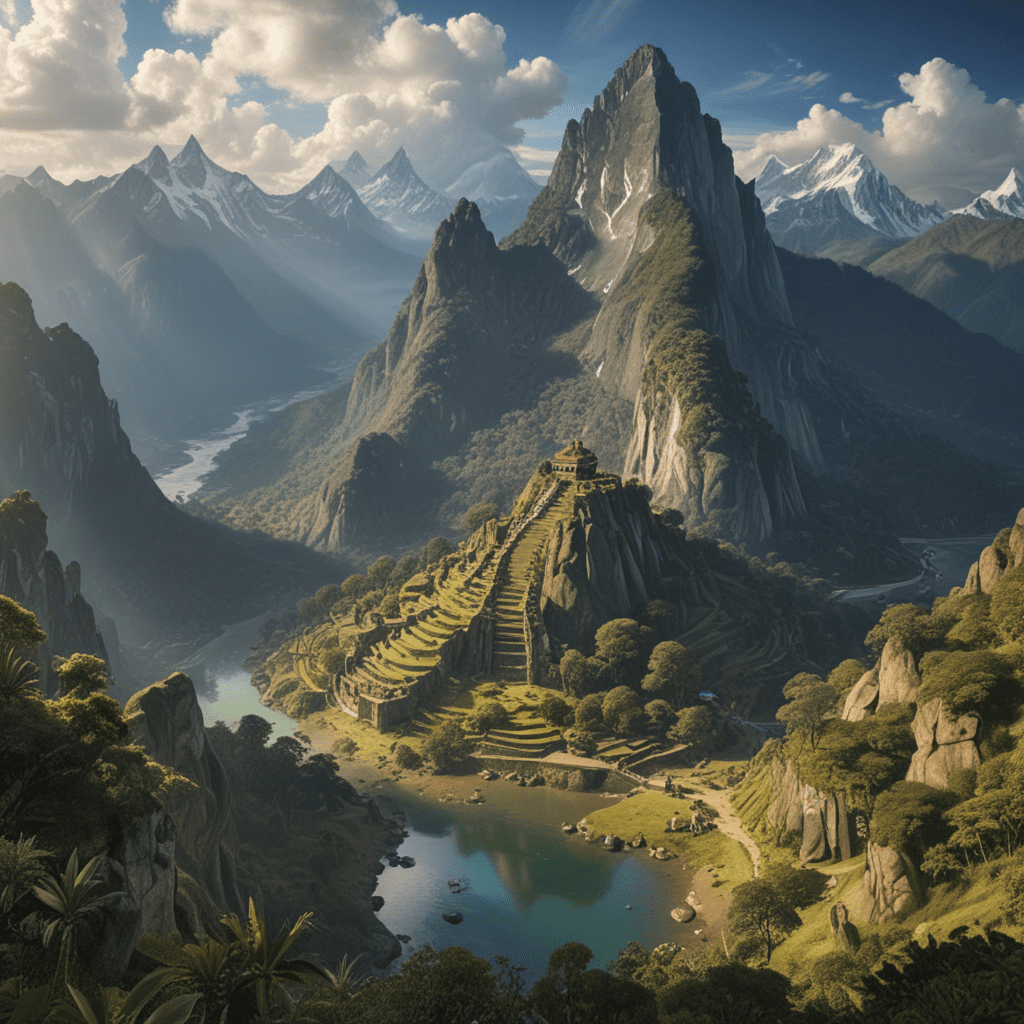1. Introduction
The towering peaks of the Andes Mountains have long held a sacred significance in the mythology of South America. These majestic mountains were revered as the abodes of gods and spirits, and they played a central role in the religious beliefs and practices of various pre-Columbian cultures. From the Incas to the Aymara and Mapuche people, the sacred mountains of South America continue to captivate and inspire awe in those who behold them.
2. The Andes: A Sacred Landscape
The Andes Mountains, stretching for over 7,000 kilometers along the western coast of South America, form a formidable natural barrier that has shaped the region's history and culture. These mountains are home to some of the highest peaks in the world, including Mount Aconcagua, the highest mountain outside of Asia. The Andes have long been a source of mystery and wonder, and their towering peaks have been imbued with sacred meanings by the indigenous peoples who have inhabited this region for centuries.
3. Apu Ausangate: The “Lord of the Mountains” in Inca Mythology
In Inca mythology, the Andes Mountains were believed to be the abode of the apus, or mountain spirits. These powerful spirits were revered as protectors of the people and the land, and they were often invoked during rituals and ceremonies. One of the most important apus was Apu Ausangate, known as the "Lord of the Mountains." This sacred peak, located in the Cusco region of Peru, was believed to be the home of the Inca creator god, Viracocha.
4. Cerro Rico de Potosí: The Silver Mountain and the Myth of the Devil
Cerro Rico de Potosí, located in present-day Bolivia, is one of the most famous mountains in South America. This mountain was once the site of a massive silver mine, and it is said to have been the source of vast wealth for the Spanish conquistadors. According to legend, the devil himself was involved in the creation of the mine, and he is said to have demanded human sacrifices in exchange for the silver. Cerro Rico de Potosí remains a sacred site for many people, and it continues to be mined for silver to this day.
5. Nevado Sajama: The Aymara God of Rain and Agriculture
Nevado Sajama, located in the Oruro region of Bolivia, is the highest mountain in the country. This sacred mountain is revered by the Aymara people as the god of rain and agriculture. According to legend, Nevado Sajama was once a human who was turned into a mountain by the gods. The Aymara people believe that Nevado Sajama controls the weather and that he can bring rain and fertility to the land.
6. Mount Sorata: The Legendary Birthplace of the Inca Empire
Mount Sorata, located in the La Paz region of Bolivia, is a sacred mountain that is believed to be the birthplace of the Inca Empire. According to legend, the Inca god Viracocha emerged from the waters of Lake Titicaca and created the Inca people at the foot of Mount Sorata. This mountain is also said to be the home of the Inca thunder god, Illapa. Mount Sorata remains a sacred site for many people, and it is a popular destination for pilgrimage and tourism.
7. The Sacred Mountains of the Mapuche People
The Mapuche people, who inhabit the southern regions of Chile and Argentina, have a deep reverence for the sacred mountains of their homeland. These mountains are believed to be the abodes of the Mapuche ancestors, and they are often the sites of religious ceremonies and rituals. One of the most important sacred mountains for the Mapuche people is Mount Tronador, located in the Andes Mountains on the border between Chile and Argentina. Mount Tronador is believed to be the home of the Mapuche god, Pillan.
8. The Role of Sacred Mountains in Pre-Columbian Rituals and Beliefs
Sacred mountains played a central role in the religious beliefs and practices of pre-Columbian cultures in South America. These mountains were often the sites of temples and shrines, and they were used for a variety of rituals and ceremonies. For example, the Incas believed that the apus could control the weather and bring rain and fertility to the land. As a result, they would often make offerings to the apus and perform rituals to appease them.
9. The Contemporary Significance of Sacred Mountains in South America
Sacred mountains continue to hold a deep significance for many people in South America today. These mountains are often seen as symbols of cultural identity and national pride. They are also popular destinations for tourism and pilgrimage. For example, Mount Machu Picchu in Peru is one of the most popular tourist destinations in South America. This mountain is believed to have been a sacred site for the Incas, and it is now a UNESCO World Heritage Site.
10. Conclusion
The sacred mountains of South America are a testament to the rich cultural heritage of the region. These mountains have been revered for centuries by indigenous peoples, and they continue to hold a deep significance for many people today. Whether they are seen as the abodes of gods and spirits, or as symbols of cultural identity, the sacred mountains of South America continue to captivate and inspire awe in those who behold them.
FAQ
What is the highest mountain in South America?
Mount Aconcagua
What is the most famous mountain in South America?
Mount Machu Picchu
What is the sacred mountain of the Inca people?
Apu Ausangate
What is the sacred mountain of the Aymara people?
Nevado Sajama
What is the sacred mountain of the Mapuche people?
Mount Tronador



